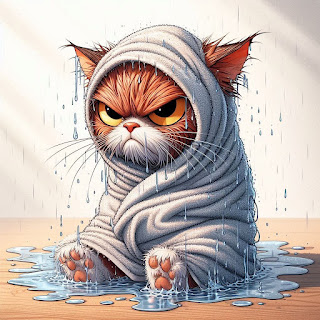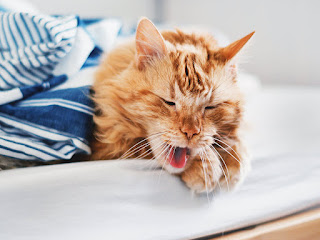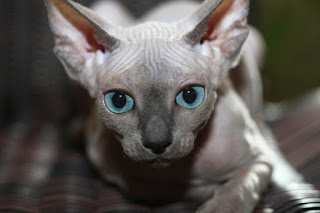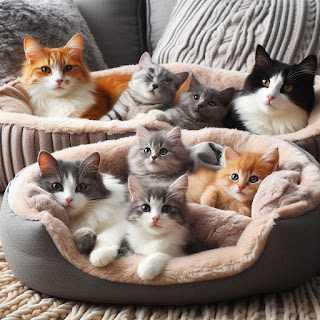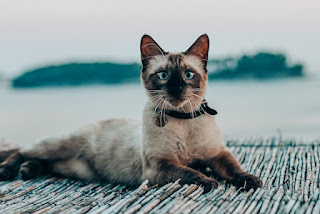In the world of feline companions, certain breeds stand out for their
exceptional affection towards humans. This article delves into ten
affectionate cat breeds, including prized Persian cats, known for their
loving nature and unique personalities1.
Among these, breeds like the Ragdoll, Scottish Fold, and Sphynx are
celebrated for their sociable dispositions and the ability to form
strong bonds with their owners1.
Each cat breed presents a distinctive blend of coat type, color, and
temperament, making them ideal candidates for those seeking a cuddly pet1.
Understanding the high levels of care and interaction these
affectionate cat breeds require is crucial for prospective pet owners.
Regular veterinary visits, premium nutrition, clean water, and
meticulous grooming are indispensable for their wellbeing1.
This guidance serves as a foundational step for readers contemplating
the inclusion of a feline friend in their family, emphasizing that
affectionate breeds like Persian cats not only bring joy and
companionship but also necessitate a committed approach to their care1.
Ragdoll
Ragdoll cats stand out as one of the most affectionate and
family-friendly breeds, thanks to their unique combination of
personality traits and physical characteristics. Here's a closer look at
what makes Ragdolls so special:

Scottish Fold
Scottish Folds, known for their distinctive folded ears and round,
"owl-like" appearance, are a breed that commands attention not just for
their looks but for their endearing personalities as well17. Originating from a barn cat named Susie in Scotland in 1961, these cats have a rich history that contributes to their charm69.
Weighing between 5 to 11 pounds and standing at 8 to 10 inches, they
present a medium-sized, rounded physique that's as adorable as it is
cuddly16.
- Physical Attributes & Care:
- Coat Patterns: Available in white, calico, tortoiseshell, tabby, and more1.
- Varieties: Short-haired and long-haired (Highland Folds)6.
- Grooming: Weekly for short-haired and bi-weekly for Highland Folds6.
- Health Concerns: Prone to osteochondrodysplasia and ear infections9.
Scottish Folds thrive on companionship, displaying a sociable nature that makes them excellent family pets6. They prefer not to be left alone, often following their favorite person around the house with great dignity10.
Despite not being typical lap cats, their affectionate demeanor and
enjoyment of human interaction make them highly sought after910.
However, prospective owners should be aware of the breed's specific
health concerns, particularly those related to their unique ear
structure, and engage in responsible breeding practices69.
Sphynx
Sphynx cats, with their distinctive hairless appearance, bring a
unique blend of charm and personality to any home. Here's what makes
them stand out:
Sphynx cats are indeed a unique breed, combining their need for
attention with an affectionate and playful nature. Their care requires a
committed owner ready to meet their grooming and health needs, ensuring
these sociable pets lead a happy and healthy life 111213.
Maine Coon
Maine Coons are not only one of the largest domestic cat breeds but
also among the most sociable and affectionate, making them perfect
companions for families and individuals alike. Their notable features
include:
Maine Coons' unique combination of sociability, affection, and
adaptability, coupled with their distinctive physical characteristics,
makes them an excellent choice for those looking to add a loving and
lively member to their household.
Siamese
Siamese cats, with their striking features and social nature, make
for engaging and affectionate companions. Here's a closer look at what
sets them apart:
Siamese cats are not only a testament to the beauty and intelligence
of the feline world but also embody the deep, affectionate bonds that
cats can form with their humans. Their vocal nature and demand for
attention make them the perfect companion for those looking to add a
lively and loving member to their family 212223.
Persian
Persian cats, celebrated for their luxurious coats and serene
demeanor, are a quintessential choice for those seeking a gentle and
affectionate feline companion. Here's an insight into what makes Persian
cats a beloved breed among cat enthusiasts:
Persian cats, with their rich history and noble demeanor, continue to
enchant cat lovers worldwide, offering a blend of affection, loyalty,
and tranquility 28.
Conclusion
Throughout this article, we have explored a diverse array of
affectionate cat breeds, each with its own unique set of characteristics
and care requirements. From the luxurious Persian to the sociable
Siamese, and the friendly Ragdoll to the distinctive Sphynx, these
breeds embody the wide spectrum of companionship and affection offered
by our feline friends. The importance of understanding their individual
needs, from grooming and nutrition to health care, cannot be overstated,
highlighting the commitment required to ensure their wellbeing and
happiness.
In embracing any of these breeds into your home, you not only gain a
pet but a loving companion capable of forming deep, meaningful bonds.
The selection process should involve careful consideration of their
physical and personality traits to ensure a match that enriches both the
lives of the cat and its human family. As we conclude, let it be a
reminder of the joy and fulfillment these affectionate cat breeds can
bring into our lives, making every effort to care for them well worth
it.
FAQs
What are the most affectionate cat breeds for someone looking for a cuddly pet?
The top ten cat breeds known for their affectionate nature and desire
for cuddles include the Ragdoll, known as "puppy cats" for their
dog-like behavior, Persian cats, Abyssinians, Maine Coons, Burmese,
Sphynx, Cornish Rex, and Scottish Fold. These breeds are ideal for those
seeking a loving and playful feline companion.
Which cat breed demands the most attention from its owners?
The Ragdoll cat breed is known for its large size and laid-back
nature but stands out for its need for attention. These cats are
extremely gentle and affectionate, thriving on being the center of their
owner's world and willing to tolerate almost anything for affection.
What are the friendliest cat breeds to consider for adoption?
The Maine Coon, known as "America's cat," leads the list of the
friendliest cat breeds, followed by Siamese, Ragdoll, Abyssinian,
Birman, and Sphynx. These breeds are known for their sociable and
affectionate demeanor, making them great companions.
How should one go about selecting a cat that enjoys cuddling?
When looking for a cuddly cat, choose one that shows an active
interest in people, displaying curiosity and a desire for affection and
attention. It's important to note that cats may act differently in noisy
or unfamiliar settings. A good candidate for a cuddly companion is an
adult cat that tolerates being handled and petted without showing
aggression.
Need a Professional Cat Care? Check out this page.
References
[1] - https://www.thesprucepets.com/affectionate-cat-breeds-4846595
[2] - https://www.petplan.co.uk/pet-information/cat/breed/ragdoll/
[3] - https://www.quora.com/What-are-Ragdoll-cats-like-Are-they-loyal-and-affectionate-Why-or-why-not-How-can-you-tell-if-a-Ragdoll-is-friendly-or-just-curious-and-not-attached-to-you-personally
[4] - https://www.thesprucepets.com/ragdoll-cat-breed-profile-4583144
[5] - https://untamed.com/blogs/cat-breeds/pros-and-cons-of-ragdoll-cats
[6] - https://www.highlandtitles.com/blog/scottish-fold-cat/
[7] - https://www.hillspet.com/cat-care/cat-breeds/scottish-fold
[8] - https://www.aspcapetinsurance.com/resources/scottish-fold/
[9] - https://bettervet.com/resources/pet-lifestyle/scottish-fold-cat
[10] - https://www.quora.com/What-is-the-temperament-of-a-Scottish-fold-cat-Do-they-make-good-pets
[11] - https://www.hillspet.com/cat-care/cat-breeds/sphynx
[12] - https://www.quora.com/How-much-attention-do-Sphynx-cats-need
[13] - https://www.webmd.com/pets/cats/what-to-know-about-sphynx-cats
[14] - https://www.dailypaws.com/cats-kittens/cat-breeds/sphynx
[15] - https://catsofaustralia.com/blog/maine-coon-cat-behavior
[16] - https://www.quora.com/Do-Maine-Coon-cats-always-like-to-cuddle-or-are-they-usually-off-doing-their-own-thing
[17] - http://www.mainecoonforum.org/maine-coon-q/3434-not-very-affectionate.html
[18] - https://tf-clark.com/web-stories/the-endearing-traits-of-maine-coon-cat-in-usa-2/
[19] - https://www.vetamerikan.org/our-best-friends/cat-types/maine-coon
[20] - https://www.dailypaws.com/cats-kittens/cat-breeds/maine-coon
[21] - https://www.life-with-siamese-cats.com/siamese-cat-behavior.html
[22] - https://www.webmd.com/pets/cats/what-to-know-about-a-siamese-cat
[23] - https://www.quora.com/What-is-the-temperament-of-Siamese-cats
[24] - https://www.christypaw.com/persian-personality.html
[25] - https://www.quora.com/Are-Persian-cats-more-friendly-and-affectionate
[26] - https://untamed.com/blogs/cat-breeds/are-persian-cats-friendly
[27] - https://www.aspcapetinsurance.com/resources/persian-cat-facts/
[28] - https://www.catipilla.com/a-beginners-guide-to-the-persian/
[29] - https://www.dailypaws.com/living-with-pets/pet-compatibility/most-affectionate-cat-breeds
[30] - https://www.southernliving.com/culture/pets/most-affectionate-cat-breeds
[31] - https://www.quora.com/What-are-the-friendliest-and-most-affectionate-cat-breeds-towards-humans-Are-there-any-breeds-that-tend-to-be-aloof-with-people
[32] - https://www.reddit.com/r/cats/comments/osbqvz/which_cat_breed_is_the_most_affectionate_and/






